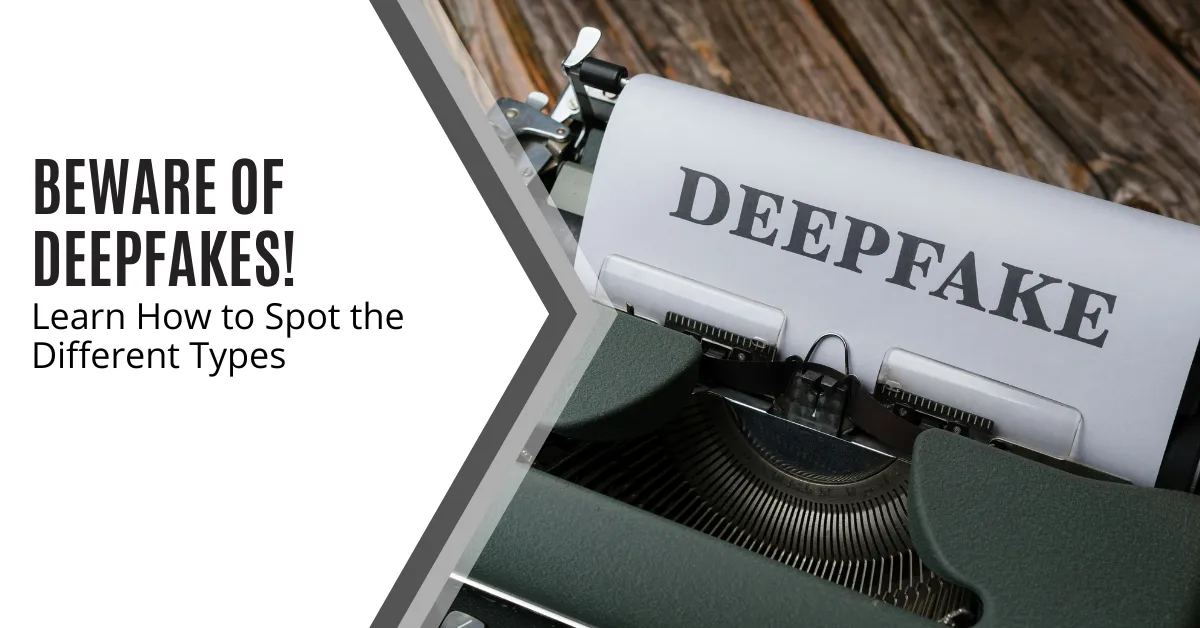See Our Latest Blogs
Stay updated with the latest trends and insights in Information Technology, cybersecurity, and digital transformation. Explore expert advice, practical tips, and innovative solutions to enhance your business efficiency and security on the CMIT Solutions blog

Beware of Deepfakes! Learn How to Spot the Different Types
Have you ever seen a video of your favorite celebrity saying something outrageous, only to later discover it was completely fabricated? Or received an urgent email seemingly from your boss that felt off? Welcome to the world of deepfakes. This rapidly evolving technology uses artificial intelligence (AI) to create synthetic media—videos or audio recordings—that appear real but are manipulated.
Deepfakes can be used for creative purposes, like satire or entertainment, but their potential for misuse is concerning. They've already infiltrated political campaigns. In 2024, a fake robocall mimicked a candidate’s voice to deceive voters into believing they said something they never did . Bad actors use deepfakes to spread misinformation, damage reputations, manipulate financial markets, and execute phishing attacks . Recognizing different types of deepfakes is crucial.
Face-Swapping Deepfakes
The most common type involves seamlessly superimposing one person’s face onto another's body in a video. These can be highly convincing, especially with sophisticated AI algorithms.
Spotting them:
Inconsistencies: Pay close attention to lighting, skin tones, and facial expressions. Look for glitches like hair not moving naturally or misalignments around the face and neck .
Source: Check where the video originated. Reputable news sites are more trustworthy than random social media pages.
Voice: Does the voice sound natural and consistent with the person’s typical speech patterns? Discrepancies in tone, pitch, or accent can be giveaways .
Deepfake Audio
These generate synthetic voice recordings mimicking someone’s speech patterns and intonations. Scammers use them to create fake audio messages.
Spotting them:
Audio Quality: Deepfake audio can sound slightly robotic or unnatural, with unusual pauses or inconsistent pronunciation .
Content: Does the audio align with what the person would typically say? Does it seem out of character or contradict known facts?
Verification: Look for independent evidence supporting the claims made in the audio.
Text-Based Deepfakes
This emerging type uses AI to generate written content—social media posts, articles, or emails—that mimics the writing style of a specific person or publication.
Spotting them:
Read Critically: Pay attention to writing style, vocabulary, and tone. Look for unusual phrasing, grammatical errors, or inconsistencies .
Factual Accuracy: Verify information against reliable sources. Don't rely solely on the text for confirmation.
Emotional Triggers: Be cautious of content that evokes strong emotions like fear, anger, or outrage. Scammers often use these to manipulate your judgment .
Deepfake Videos with Object Manipulation
Beyond faces and voices, AI manipulates objects within real footage, altering their appearance or behavior to fabricate events or evidence.
Spotting them:
Physics and Movement: Observe how objects move. Does their motion appear natural and consistent with physics? Look for unnatural movements, sudden size changes, or inconsistencies in lighting and shadows .
Original Footage: Compare with the original video if possible. This can help identify alterations.
Staying vigilant and applying critical thinking are essential. Familiarize yourself with different types of deepfakes, recognize red flags, and verify information through reliable sources. These steps will help you stay informed and secure.
Deepfakes can cause significant harm, from damaging personal reputations to influencing public opinion and causing financial loss. In 2020, a report by Deeptrace Labs found a near doubling of deepfake videos online within nine months, highlighting the rapid proliferation of this technology .
Practical Steps to Protect Yourself
Education and Awareness: Regularly update yourself on the latest trends and technologies in deepfake creation. Understanding how they work is the first step in identifying them.
Use Verification Tools: Utilize deepfake detection tools and services. Companies like Deepware Scanner and Sensity offer technology designed to detect manipulated media.
Cross-Reference Information: Always cross-check information from multiple sources. If a video or audio clip seems suspicious, look for corroborating reports from reputable news organizations.
Promote Digital Literacy: Encourage friends, family, and colleagues to be skeptical of unverified media. Digital literacy is a collective defense against misinformation.
Advocate for Stronger Policies: Support legislation and policies aimed at combating the malicious use of deepfakes. Regulatory frameworks can help mitigate the risks associated with this technology.
Get a Device Security Checkup
Criminals use deepfakes for phishing. Just clicking on one might download a virus. A device security checkup can give you peace of mind. We’ll identify and remove potential threats. Contact us today to learn more.
Sources:
"CMIT has given me peace of mind in my business by providing me with ongoing protection, monitoring and an invaluable resource of providing technical help 24/7 if needed. They have assisted me with various technical needs in my business and I appreciate small businesses supporting other small businesses in our community."
Swiss Learning Center
"CMIT sent Leslie out to deal with my computer issue - which she handled so fast I can't remember now what it was! Leslie was patient, informative, and engaged me with confidence and relief. She did not talk down to me as if I didn't have a modicum of sense - electronically - but instead was in a teaching mode. I'm so glad to know I can call CMIT whenever I have a problem and allay my fear!"
Shari
"Every business NEEDS Carmen and Jaime with CMIT Solutions. They have taken my business to the next level and I am so grateful to have them on our team. It's like having our own personal IT department. We are more productive, more professional, and ready to worry about things other than IT. As a construction company - it is not in our wheelhouse to manage this side of the business and as a small business it's not super easy to know who to contact. They are affordable and knowledgeable and can easily take any business to where they envision. They come with my highest recommendation."
Ashley R.
Get In Touch
Email: [email protected]
Address
Office: 4514 Cole Ave # 600, Dallas, TX 75205
Assistance Hours
Mon – Fri 8:00am – 5:00pm
Sat-Sun – CLOSED
Phone Number:
NOT JUST IT. COMPLETELY MANAGED IT.
Complete IT solutions the moment you need them.
© 2025 CMIT Solutions of Dallas - All Rights Reserved,


